
Gorizia, colloquially stara Gorica 'old Gorizia' to distinguish it from Nova Gorica, is a town and comune (municipality) in northeastern Italy, in the autonomous region of Friuli-Venezia Giulia. It is located at the foot of the Julian Alps, bordering Slovenia. It is the capital of the Regional decentralization entity of Gorizia and is a local center of tourism, industry, and commerce. Since 1947, a twin town of Nova Gorica has developed on the other side of the modern-day Italy–Slovenia border. The region was subject to territorial dispute between Italy and Yugoslavia after World War II: after the new boundaries were established in 1947 and the old town was left to Italy, Nova Gorica was built on the Yugoslav side. The two towns constitute a conurbation, which also includes the Slovenian municipality of Šempeter-Vrtojba. Since May 2011, these three towns have been joined in a common trans-border metropolitan zone, administered by a joint administration board.

Nova Gorica is a town in western Slovenia, on the border with Italy. It is the seat of the Municipality of Nova Gorica. Nova Gorica is a planned town, built according to the principles of modernist architecture after 1947, when the Paris Peace Treaty established a new border between Yugoslavia and Italy, leaving nearby Gorizia outside the borders of Yugoslavia and thus cutting off the Soča Valley, the Vipava Valley, the Gorizia Hills and the northwestern Karst Plateau from their traditional regional urban centre. Since 1948, Nova Gorica has replaced Gorizia as the principal urban center of the Gorizia region, as the northern part of the Slovenian Littoral has been traditionally called.
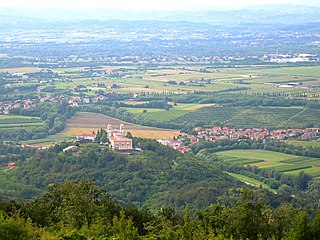
Goriška is a historical region in western Slovenia on the border with Italy. It comprises the northern part of the wider traditional region of the Slovenian Littoral (Primorska). The name Goriška is an adjective referring to the city of Gorizia, its historical and cultural centre.

The Slovene Littoral, or simply Littoral, is one of the traditional regions of Slovenia. The littoral in its name – for a coastal-adjacent area – recalls the former Austrian Littoral, the Habsburg possessions on the upper Adriatic coast, of which the Slovene Littoral was part. Today, the Littoral is often associated with the Slovenian ethnic territory that, in the first half of the 20th century, found itself in Italy to the west of the Rapallo Border, which separated a quarter of Slovenes from the rest of the nation, and was strongly influenced by Italian fascism.

The Princely County of Gorizia and Gradisca, historically sometimes shortened to and spelled "Goritz", was a crown land of the Habsburg dynasty within the Austrian Littoral on the Adriatic Sea, in what is now a multilingual border area of Italy and Slovenia. It was named for its two major urban centers, Gorizia and Gradisca d'Isonzo.

The Municipality of Miren-Kostanjevica is a municipality in western Slovenia, on the border with Italy.
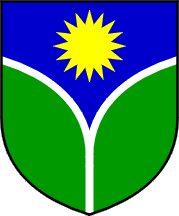
The Municipality of Šempeter-Vrtojba is a municipality in Slovenia. The municipality comprises the town and municipal seat of Šempeter pri Gorici and the adjacent village of Vrtojba. It borders Italy.

The Morgan Line was the line of demarcation set up after World War II in the region known as Julian March which prior to the war belonged to the Kingdom of Italy. The Morgan Line was the border between two military administrations in the region: the Yugoslav on the east, and that of the Allied Military Government on the west. After 15 September 1947, the Allied Military Government was composed of both the British Element Trieste Forces (BETFOR) troops from the United Kingdom and the Trieste United States Troops (TRUST) from the United States.
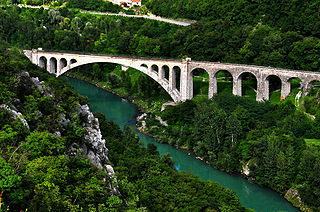
The Solkan Bridge is a 219.7-meter (721 ft) arch bridge over the Soča River near Nova Gorica in western Slovenia. With an arch span of 85 meters (279 ft), it is the world's longest stone arch railroad bridge. It holds this record because later construction technology used reinforced concrete to build bridges. It was originally built to carry the Bohinj Railway in the time of the Vienna Secession, between 1900 and 1905, and officially opened in 1906.
Pristava, also known locally as Rafut, is one of the four suburbs of the town of Nova Gorica in the Gorizia region of western Slovenia.

Solkan is a settlement in the Municipality of Nova Gorica in the Gorizia region of western Slovenia, at the border with Italy. Although it forms a single urban area with the city of Nova Gorica today, it has maintained the status of a separate urban settlement due to its history and the strong local identity of its residents.

Šempeter pri Gorici is a town and the administrative seat of the Municipality of Šempeter-Vrtojba in the Slovene Littoral region of Slovenia. There is a border crossing into the Italian town of Gorizia.
Vrtojba is a settlement in the Municipality of Šempeter-Vrtojba in the Slovene Littoral region of Slovenia. A border crossing into Italy is located here. On the Italian side of the border, opposite Vrtojba, is the suburb of San Andrea, now part of the town of Gorizia.
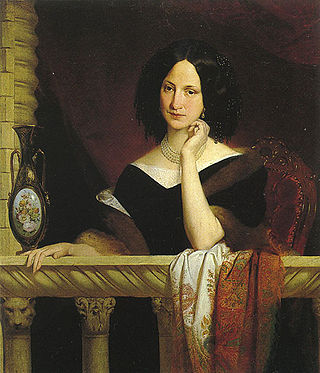
Archduchess Maria Theresa of Austria-Este was a member of the House of Austria-Este and Archduchess of Austria, Princess of Hungary, Bohemia, and Modena by birth. Henri was disputedly King of France and Navarre from 2 to 9 August 1830 and afterwards the Legitimist pretender to the throne of France from 1844 to 1883. Maria Theresa was the eldest child of Francis IV, Duke of Modena and his niece-wife Maria Beatrice of Savoy.

Miren Castle is an elevation above the settlement of Miren near Nova Gorica, in southwest Slovenia. The origin of the name, which came into usage in the 16th century, remains unexplained. No castle ever stood there. The hill is dominated by a collection of ecclesiastical buildings.
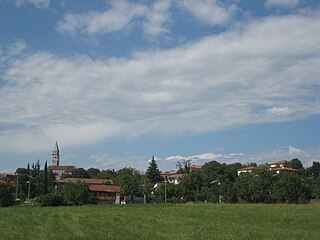
Kostanjevica na Krasu is one of the main settlements and the administrative centre of the Municipality of Miren-Kostanjevica in the Littoral region of Slovenia. It is located in the northwestern part of the Karst Plateau, not far from Nova Gorica and the border with Italy.

The Gorizia Statistical Region is a statistical region in western Slovenia, along the border with Italy. It is named after the Italian town of Gorizia.

Transalpina Square "; Slovene: Trg Evrope, meaning "Europe Square"), is a square divided between the towns of Gorizia, northeastern Italy, and Nova Gorica, southwestern Slovenia. The railway station of Nova Gorica is located at the eastern end of the square, on the Slovenian side.

Nova Gorica railway station serves the town and municipality of Nova Gorica, in the Slovenian Littoral region of Slovenia, and is also accessible from the town of Gorizia, Italy.

Sveta Gora is a settlement in western Slovenia in the Municipality of Nova Gorica. It encompasses Holy Mount, above the Soča Valley and southwest of the Banjšice Plateau.

















